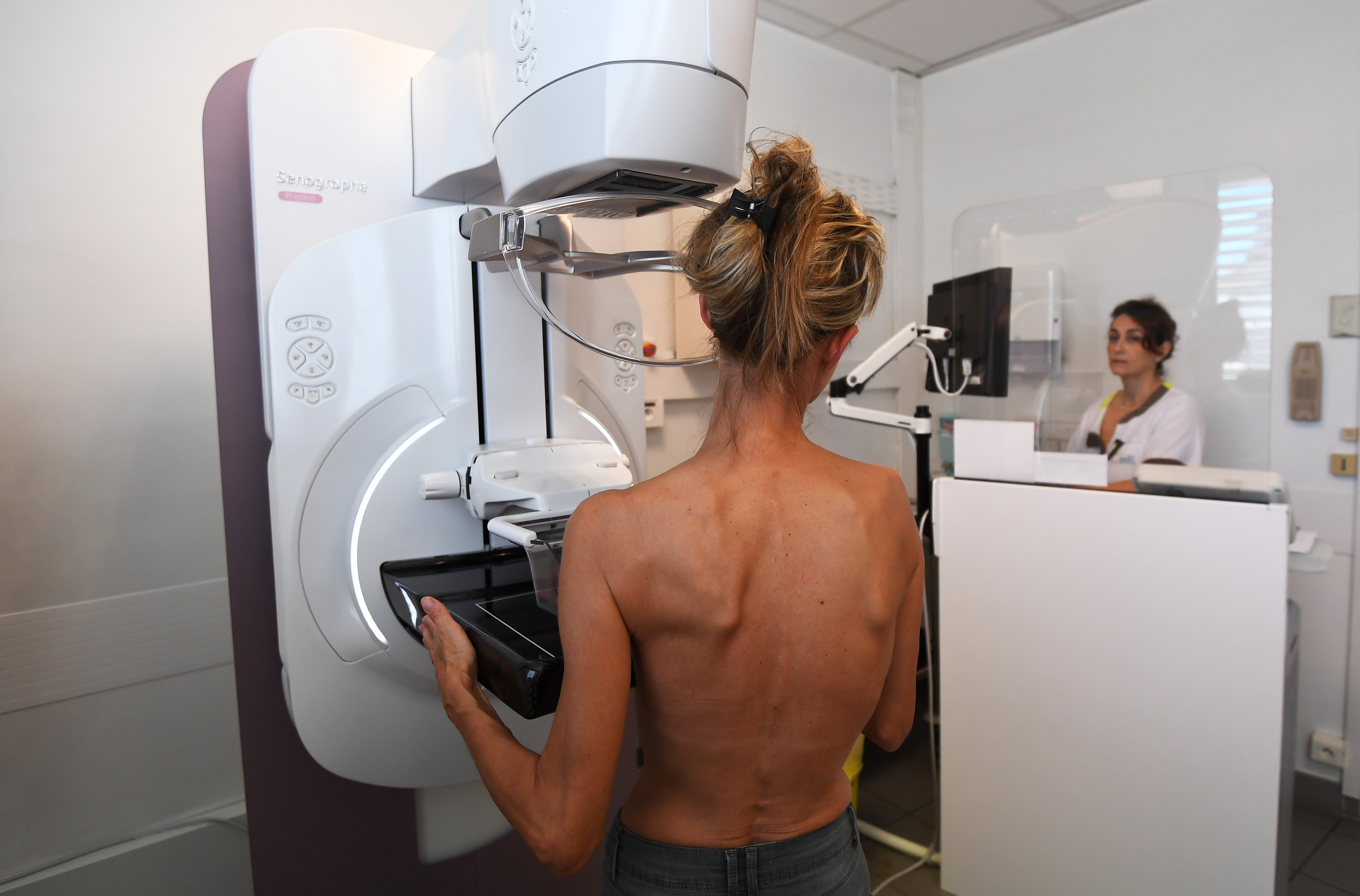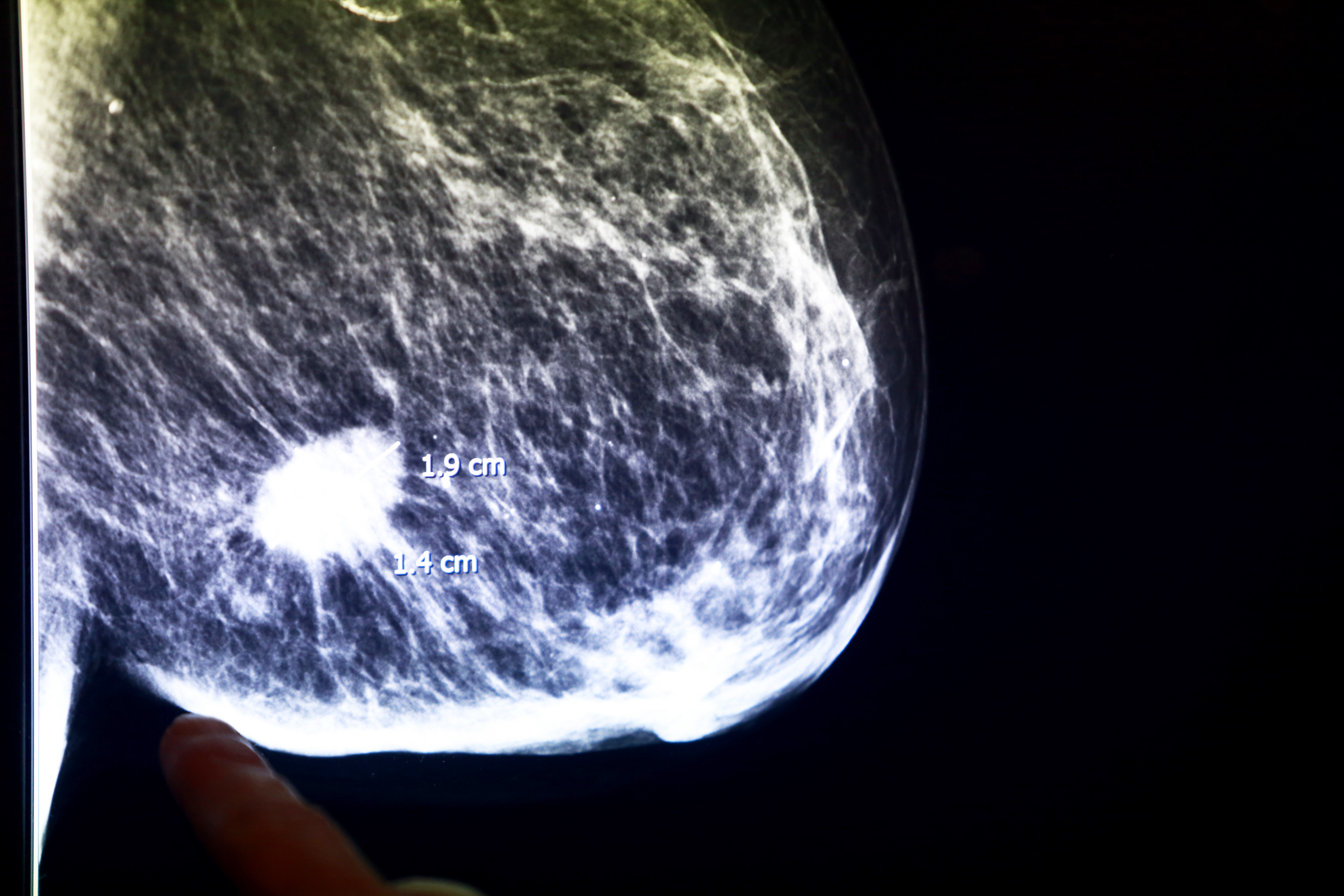Mammography is the use of X rays to create images of the inside of the breast. Mammography is an important tool used by physicians to detect breast cancer. The images are taken with a special X-ray machine that presses the breast between two flat surfaces. The breast is compressed to spread the tissue so a lower dose of X rays can be used. The procedure produces a black-and-white image of the breast tissue called a mammogram. The mammogram is then examined by a radiologist, a physician trained in using images for medical diagnosis.

Doctors often order mammography to determine the cause of breast problems, such as a lump, skin dimpling, breast pain, or an abnormal discharge from the nipple. This type of mammography is called diagnostic mammography. Many abnormalities appear on a mammogram as a mass of little white flecks called calcifications or as an opaque mass. Most such abnormalities are benign (not cancerous). The features of an abnormality indicate whether it is more likely benign or cancerous. Irregular, poorly outlined borders of a mass on the image can suggest cancer. Additional images and other tests are usually required to determine if cancer is present.

Screening mammography is performed to detect breast cancer in women who have no symptoms. Screening mammography is used to find breast cancers as early as possible, before tumor cells have metastasized (spread outside the breast). Among women over the age of 50, mammography can detect cancerous tumors in the breast 3 to 4 years before the tumor is large enough to be felt. Detecting cancer while a tumor is still small greatly increases the chances of a cure. Most doctors recommend that women begin having annual mammograms at age 40 to 50.
Standard mammograms, however, fail to detect about 15 percent of breast cancers. A new technique called full field digital mammography creates a computer image of the breast. Some experts believe that computer analysis of mammograms will allow more accurate detection of abnormalities. However, other experts think that the technique finds many harmless abnormalities without increasing the rate of cancer detection.
